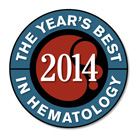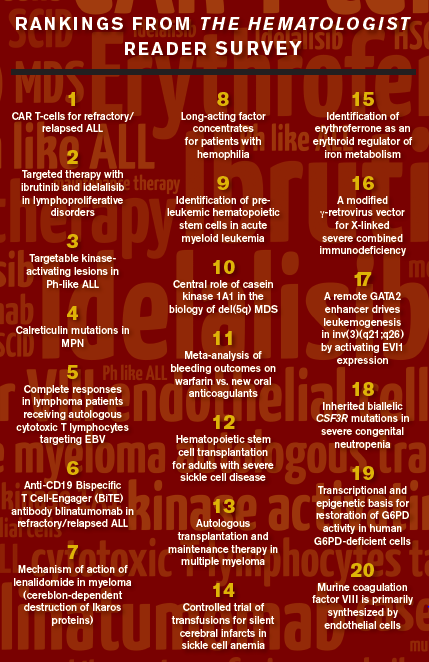A recurrent refrain I hear about The Hematologist from ASH members is how much they enjoy receiving it in the mail and reading it from cover to cover in their office or before they retire to bed. I know this to be true because I have done the same since my instructor days in 2004, the inaugural year of the publication.
The Hematologist weaves together different missions of the Society. Core departments such as Diffusion, Ask the Hematologist, Mini Reviews, and the Clinical Trials Corner educate about basic and clinical research advances; Headlines from Washington communicates advocacy efforts; News and Reports provides Society updates on topics from career development programs to new funding initiatives; and additional perspectives, in the form of Features, Profiles, and Op-Eds, speak to the interests of International members as well as community- and academic center–based practitioners. This mosaic of features and departments reflects the cumulative stewardship of four successive editors-in-chief (Dr. Andrew Schafer, Dr. Peter Emanuel, Dr. Roy Silverstein, and Dr. Charles Parker) as well as the dedication of ASH’s communications staff. As I begin my editor-in-chief role, this is a good opportunity to thank Roy and Charles for their guidance during my five years as a contributing editor. In particular, Charles’ mentorship during the last few months made my transition seamless. The contributing editors, as well as the ASH staff who support this publication, merit special recognition for their steadfast commitment. Together, these individuals bear witness to the axiom that producing each issue of The Hematologist is a “team sport.”
We have recast this January/February issue as a “Year’s Best” review of 2014’s most compelling breakthroughs in hematology. The selections were generated and ranked by our board of contributing editors. In turn, we emailed a survey to ASH members so they could also cast their choices for the most influential discoveries. In this issue, we provide the results of the reader survey as well as reviews reflecting the contibuting editors’ choices, led by the number-one-ranked “Targeted Therapy in Lymphoproliferative DisordersTargeted Therapy in Lymphoproliferative Disorders,” followed by several noteworthy honorable mentionshonorable mentions. Such end-of-the-year lists often fuel controversy; in the least, we hope that ours sparks conversation. Notwithstanding the number of pages available to us, we are unable to acknowledge every game-changing breakthrough. However, we hope that our synopsis will capture the essential flavors of hematology in 2014 much like a tasting menu at a Michelin-starred restaurant.
In the coming months, I look forward to working with ASH President Dr. David Williams and with Dr. Mikkael Sekeres, editor-in-chief of our sister publication, ASH Clinical News, to deliver topical and complementary content. Additionally, having the publication tap into the speed and multiplicative effects of social media is a powerful means by which The Hematologist can maintain its responsiveness to the voices of ASH members. Furthermore, we plan to diversify the way The Hematologist communicates content by adding podcast and video features, while the print publication, ASH’s website, and a future app for the publication will serve as the primary delivery channels.
Author Fran Lebowitz commented that one of the major reasons that the New York City Ballet reached spectacular heights during the era of George Ballanchine and Jerome Robbins was because the audience pushed it toward perfection. The audience had immensely high standards and knew as much about ballet as the people who produced it. This is a guiding principle worth emulating for The Hematologist.


